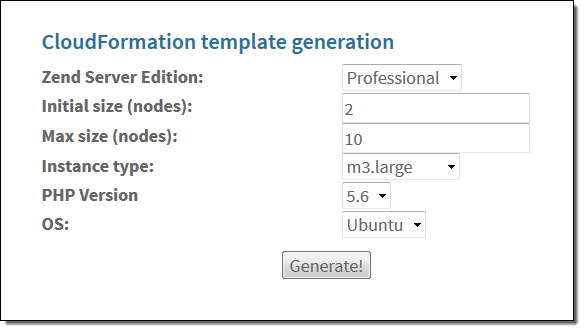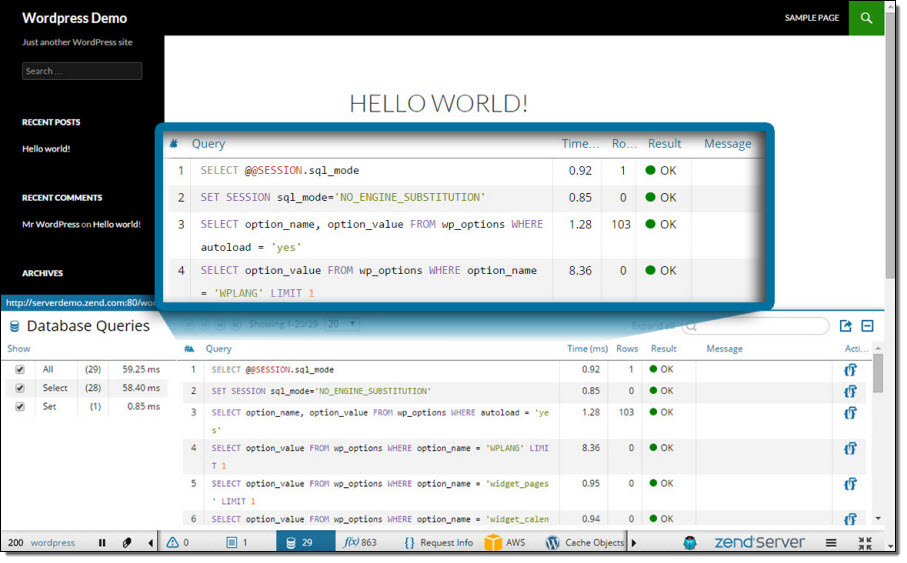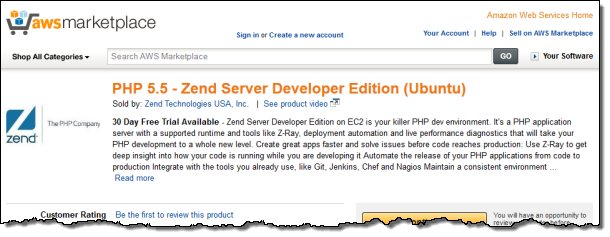AWS News Blog
Zend Server 8 – New Monitoring and Performance Tools
Late last week I met with Andi Gutmans and Michel Gerin of Zend Technologies. Because Andi is a self-described “coffee snob,” we headed directly to the nearby Dilettante Cafe for an in-depth chat. It was interesting to hear how they had grown from an organization focused on the PHP language to one that was taking on the more broad mission of scalability, monitoring, and visibility in to the run-time state of web and mobile applications that happened to be built using PHP. In fact, the only mention of PHP came when I remarked that we had spent no time discussing it. Andi spent more time telling me about his quest for the perfect microfoam than he did about language features!
Zend Server Update
We discussed their work on Zend Server, including the freshly released Version 8. As I described in a post that I wrote last year, Zend Server (and the crucial Z-Ray technology) gives developers access to in-content feedback on the behavior of the application that they are building, testing, or running. Z-Ray provides developers with information about page requests, execution time, peak memory usage, events, PHP errors & warnings, SQL query execution, and variables.
I learned that Zend Server also has a number of other features that help applications run quickly and efficiently. These were not the subject of our chat and I didn’t take good notes, but we talked about code & data caching, job queues, and job scheduling. We also discussed cluster management and some new AWS integration. Zend Server can now be launched via AWS CloudFormation. It even includes a CloudFormation template generator to make this process simpler and totally repeatable:

Zend Server knows how to deploy code from Amazon Simple Storage Service (Amazon S3) (it can also pull from Git or deploy Zend Packages, also known as ZPKs).
Z-Ray Demo
Andi was eager to demo the newest Z-Ray features for me. He fired up his laptop (a stylish MacBook Air), got the Wi-Fi password from the barista, and connected to his demo instance. He explained to me that they created an extensibility model for Z-Ray and used it to create a series of extensions for popular applications and frameworks. Each extension has intimate knowledge of the programming model, data structures, and database queries built and referenced by the associated environment. This intimacy allows each extension to display the most important elements of each environment in a manner that will be familiar and comfortable to developers who are already versed in the environment.
Out of the box (to use that tired term left over from the by-gone era of shrink-wrap software), Z-Ray includes extensions for the Magento, Drupal, and WordPress application platforms. It also includes extensions for the Zend Framework, Symfony, and Laravel application frameworks. These extensions are available from the Official Zend Server Extensions repo on GitHub. Here’s an example of Z-Ray in action. It is aware that it is accessing the database queries initiated by a WordPress application and the display is customized accordingly:

The extension API is open and documented. Third-party (non-Zend) developers have already created extensions for other environments including Doctrine 2 (read more about the extension).
Zend Server on AWS
The Developer and Professional editions of Zend Server are available on the AWS Marketplace and you can launch a free trial of either one with a couple of clicks:

Both editions include a bunch of features that are intended to make Zend Server mesh smoothly with existing AWS environments and applications. Here are some of the features:
- A new, JSON-based format for the EC2 user data that is passed to each newly launched instance. This data is used to configure the Zend Server.
- A Z-Ray extension for the AWS API.
- Custom script actions on startup.
- Control over the dissemination of AWS access and secret keys to instances.
- Control over cluster membership.
To learn more about these features, watch Zend’s new video, Getting Started with Zend Server and Z-Ray on AWS.
We wrapped up our meeting, recycled our mugs (this is Seattle, after all), and they headed back to Sea-Tac airport for their flight back to Silicon Valley!
— Jeff;
PS – I love to learn and write about cool uses of AWS. Please track me down (a search for ‘contact jeff barr’ is a good start) and let me know when you are coming to Seattle!